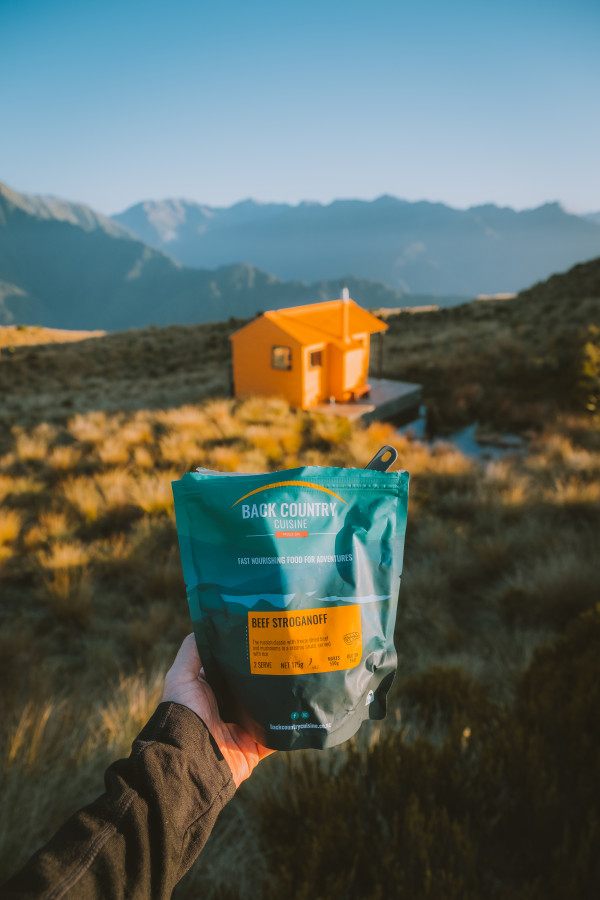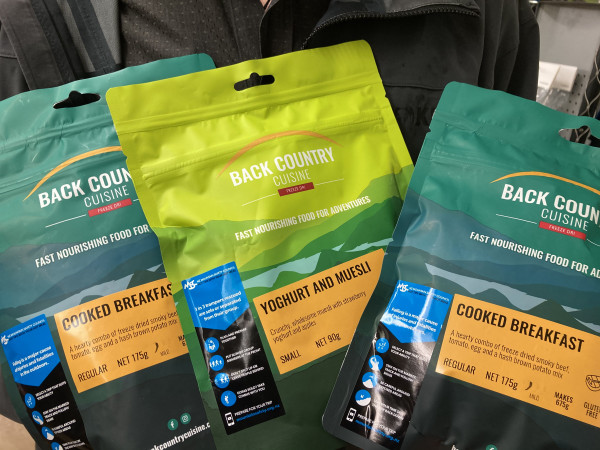Enjoying cuisine in the back country
They have been a staple tramping pack item for almost two decades, and now Back Country Cuisine is one of the biggest producers of freeze-dried meals for use in the outdoors in Australasia. However, what many people don’t know is that all the meals are handmade, packaged and distributed by just 21 people in our most southernmost city of Invercargill.
Tony Caudwell of Back Country Cuisine chats to us about everything freeze-dried meals - the brand, attitude changes towards packing for the outdoors, and his top tips to enjoying the perfect Back Country Cuisine meal.

Tony believes the biggest public misconception is that people think Back Country Cuisine as a huge company.
“But we are not a huge business, we have a team of 21 people who make, pack and distribute meals to New Zealand stores and Australia."
The key to the business’ success is how tasty the broad range meals are, including vegan, vegetarian and halal options, and its unique and innovative way of freeze drying.
“We do things a little different,” he says.
“What we do to make sure meals are consistent is we freeze dry all the ingredients separately and they only come together when they are packed together into a meal, meaning each meal has the same quantity of ingredients every time."
Freeze drying gives food a long shelf life, low weight while maintaining its nutritional benefits, which appeals to outdoor adventurists for its simplicity.
In the freeze-drying process, crystals of frozen ice in the food are removed in a vacuum chamber - a process call sublimation where the ice turns to gas without becoming a liquid. The result is a completely dry product that does not shrink during the drying process, he says.
After packing, the food is heat-sealed in foil pouches from which the air has been replaced with nitrogen gas - this keeps the food safe and flavoursome for at least four years.
The beauty of freeze drying is that it retains the natural vitamins in the food because of the low temperatures used in processing, Tony says.
It all began back in 1998 when Back Country Cuisine took over the business from the local founding company Alliance Freezing Company. In the 60s, Alliance experimented freeze drying with prime cuts of steak. It then started to make meals for the military as the long shelf life was appealing, especially in a time when rations were important, Tony says.
Then it expanded again, but into the outdoor adventure sector.
“Back then, those heading into the outdoors took almost the whole kitchen with them,” Tony says.
“But around the 60s people started really thinking about the weight of packs and what they were taking, such as all the food - bacon, eggs, veges and dry ingredients for scones and bread.”
Freeze-dry meals really changed the thinking of taking food into the bush, he says.
Despite the broad and delicious range of breakfast, lunch, dinner and deserts, Tony says the most popular has been, and still is, the roast lamb with vegetables dinner as well as the apple pie desert.
“Part of our success is having the home cooked favourites in our range,” Tony says.
“I think it’s a psychological thing, it’s comforting having the taste of home when you’re out there in wild places. It depends on the trip though, you might take something a little more exotic on an easier trip, but if you’re planning to push your limits you can’t beat the taste of a home cooked meal at the end of a hard day.”

Tony Caudwell of Back Country Cuisine
Tony’s top tips and tricks
As a keen outdoorsman, Tony has a few tricks up his sleeve when it comes to preparing the perfect Back Country Cuisine meal.
Tony says that instead of cutting the meal packet down to the bowl size as a suggestion on the packaging, simply cutting the top and using a longer spoon to eat the meal means that after rinsing the bag out it can be used as a rubbish bag, with the zip lock top, for the rest of your adventure.
The fear of adding more water catches many users out, Tony says.
The amount of water specified on the packet is just a minimum measurement recommendation, he said.
“The reason we do that is you can’t take water out but you can put more in.
“So don’t be afraid to put a little extra water in at the end,” he says if the consistency is too thick.
Sticking together - safety and food collaboration
This year Mountain Safety Council and Back Country Cuisine collaborated for the second run of 42,000 'Hot Tips with your Hot Meal’ outdoor safety stickers on the meal packaging.
“For us to be able to help MSC get the message of safety out there is fantastic and it’s a really great collaboration for us,” Tony said.
The stickers include tips on what to pack for an outdoor trip, how to check if a river is safe to cross, what clothes are good for all elements, along with QR codes to find more information.
“If we can help to keep people safe in the outdoors with the packaging of our meals, then that’s awesome.”
- Find out more on their website.
PHOTOS: Supplied by BC Meals
Want to learn what else to take on your trip? Learn in our Skills Section
So what's your favourite Back Country Cuisine Meal?
If you have a story to share about one of your experiences in the outdoors with or without a Backcountry Meal, get in touch with us: Rebekah.Wilson@mountainsafety.org.nz or tag us on social media with #ShareYourStoryNZ
